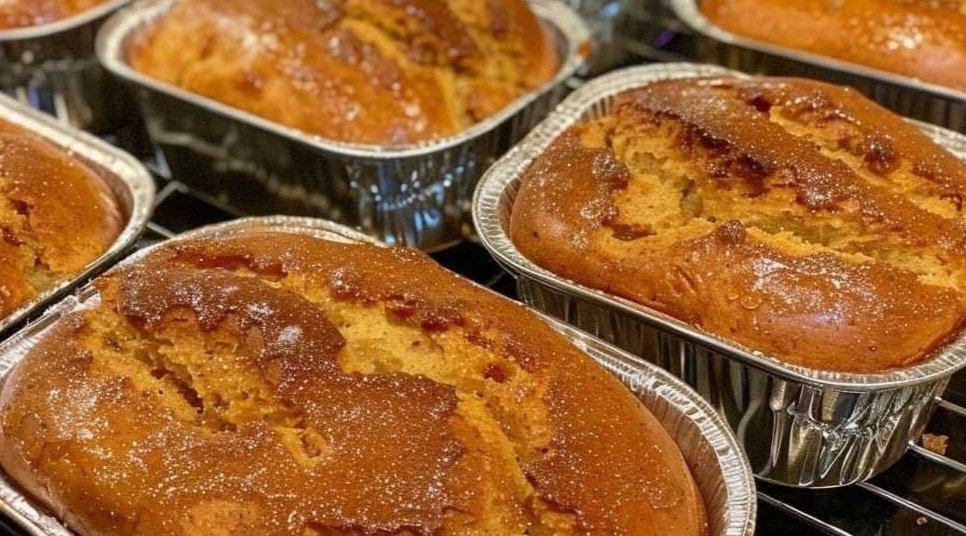Sure! Here’s a complete, beautifully written and cohesive guide for Classic Homemade Pound Cake, with all the sections you asked for — written in a natural flow and without wide lines.
Classic Homemade Pound Cake
Introduction
The Classic Homemade Pound Cake is a timeless dessert that has graced countless family tables for generations. With its rich, buttery flavor and tender crumb, this cake embodies simple elegance. It’s the perfect companion to a cup of tea or coffee and can easily be dressed up with fresh fruits, whipped cream, or a dusting of powdered sugar.
Origin and Cultural Significance
The pound cake originated in 18th-century Europe, named for its original formula—one pound each of butter, sugar, eggs, and flour. This straightforward recipe made it easy to remember and share, symbolizing home baking at its finest. Over time, the pound cake became a beloved staple in American Southern cuisine, often served at celebrations, Sunday dinners, and community gatherings. It remains a symbol of hospitality, comfort, and tradition.
Ingredients Quantity
- Unsalted butter – 1 cup (2 sticks), softened
- Granulated sugar – 2 cups
- Large eggs – 4
- All-purpose flour – 2 cups
- Baking powder – 1 teaspoon
- Salt – ½ teaspoon
- Whole milk – ½ cup
- Pure vanilla extract – 2 teaspoons
Optional Additions
- 1 teaspoon lemon or almond extract for flavor variation
- 1 tablespoon sour cream for extra moisture
- Zest of one lemon or orange for a citrus twist
- Dusting of powdered sugar for garnish
- Fresh berries or a drizzle of glaze for presentation
Tips for Success
- Use ingredients at room temperature to ensure smooth mixing and even baking.
- Cream the butter and sugar thoroughly—this step is key for a light texture.
- Do not overmix once the flour is added; mix only until combined.
- Bake at a consistent temperature to avoid a dense center or cracked top.
- Let the cake cool completely before slicing for clean cuts.
Instructions
- Preheat the oven to 350°F (175°C). Grease and lightly flour a 9×5-inch loaf pan.
- In a large mixing bowl, cream the butter and sugar together until pale and fluffy (about 3–4 minutes).
- Add the eggs one at a time, beating well after each addition.
- In a separate bowl, whisk together the flour, baking powder, and salt.
- Gradually add the dry ingredients to the butter mixture, alternating with the milk. Begin and end with flour.
- Stir in the vanilla extract (and any optional additions).
- Pour the batter into the prepared pan, smoothing the top with a spatula.
- Bake for 55–65 minutes, or until a toothpick inserted into the center comes out clean.
- Cool in the pan for 10 minutes, then transfer to a wire rack to cool completely.
Description
This pound cake is golden on the outside with a moist, buttery interior. Each slice is rich yet balanced, with a melt-in-your-mouth texture that makes it irresistible. It pairs wonderfully with fruits, ice cream, or a simple glaze, making it both versatile and classic.
Nutritional Information (Per Slice, Approx. 1/10 of Loaf)
- Calories: 380
- Fat: 20g
- Saturated Fat: 12g
- Cholesterol: 120mg
- Sodium: 180mg
- Carbohydrates: 45g
- Sugars: 28g
- Protein: 6g
Conclusion
The Classic Homemade Pound Cake is more than a dessert—it’s a nostalgic bite of comfort that connects generations. Its simplicity is its greatest strength, offering a dependable recipe that can be enjoyed plain or enhanced with modern twists.
Recommendation
Serve this cake slightly warm with a dollop of whipped cream or a spoonful of fresh berries for an elegant dessert. For a festive touch, drizzle with a light lemon glaze or caramel sauce.
Embracing Healthful Indulgence
Enjoying a slice of pound cake doesn’t have to mean overindulgence. Savor it mindfully, pairing it with nutrient-rich sides like fruit or yogurt. When made with quality ingredients and enjoyed in moderation, this cake can be part of a balanced, joyful lifestyle—celebrating both tradition and self-care.
Would you like me to format this into a printable recipe card layout or cookbook-style page (with sections and icons for time, servings, etc.)?
